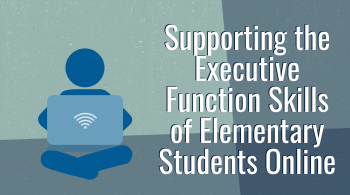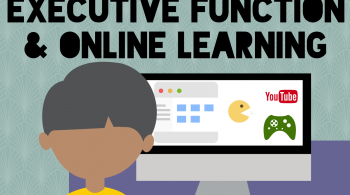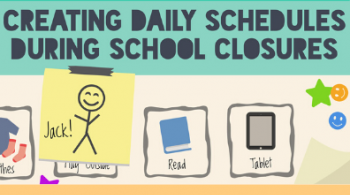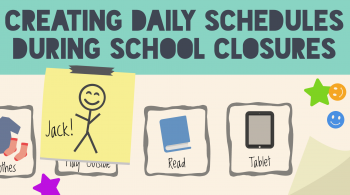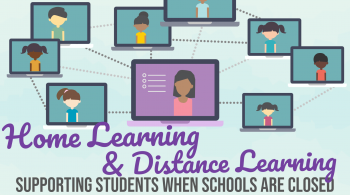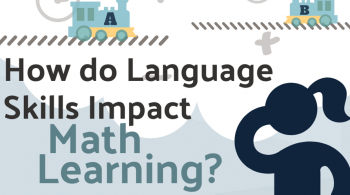By Bridget Dunbar
February 16, 2016


Guest blogger Bridget Dunbar is an Instructional Resource Teacher for Mathematics in St. Mary’s County Public Schools in Maryland and adjunct faculty for St. Mary's College of Maryland. She is certified in both mathematics and special education and shares her exceptional math knowledge through tweets at @BridgetDunbar on Twitter.
The mathematical life of an algebra student is filled with abstract concepts and symbols, multiple representations, and computation with rational numbers. The required thinking and knowledge can be challenging for students with typical learning needs, so it’s not surprising that students with learning disabilities may find this time in their mathematical career to be particularly taxing.
Educators know that algebra is the key for success in future math courses. Math experts consider the knowledge and skills developed through algebraic representations to be important for post-secondary and workforce success, as algebra requires students to be flexible in their thinking and to use logical reasoning to solve problems. These are skills that students with learning disabilities struggle with the most.
Exacerbating this difficulty with algebraic thinking is the fact that students with learning disabilities often have poor self-concept when it comes to their mathematic ability. Therefore, teachers must maximize student strengths by offering tasks that tap into student intuition and allow for a variety of approaches to complete the task.
Fortunately, it’s a great time to be a math teacher! The internet offers a plethora of resources to develop a student’s ability to think abstractly and flexibly. Here are just a few resources:
- Which One Doesn’t Belong
Which One Doesn’t Belong task simply asks, “Which one doesn’t belong?” For example, which number doesn’t belong in the set below?

There is no one right answer! Possible responses: There are many other possibilities for a task like this, and it allows for multiple responses and understandings.
- The upper left number is the only one digit number
- The upper right number is the only even number.
- The lower left number is the only number without a multiple of 3 in the ones place.
- The lower right number is the only prime number.
- Math Talks
Math Talks, also called “Number Talks”, are used to work on computational fluency by looking for relationships and reasoning mathematically (Example: “Which is greater, 86 x 38 OR 88 x 36?”). Educators know that rote memorization is a challenge for students with learning disabilities. Continually reinforcing other strategies based on place value and mathematical properties using Math Talks may help to improve number sense. Be sure to check out the Teachers tab on the Math Talks website for more information, including this resource for number sense and algebraic thinking routines for the secondary classroom.
- Estimation 180
The National Council for Teachers of Mathematics (NCTM) recommends K-12 instructional programs provide students with the opportunity to make reasonable estimates.
Teachers can use the Estimation 180 site daily to allow students to communicate ideas and improve estimation skills. Students share an estimate that is too low, too high, and then their actual estimate within their range.
This is another great activity that allows access and engagement for students at all levels. Here’s an example from the Estimation 180 website: How many cheeseballs will fit on the tray?

- Visual Patterns
The Visual Patterns site can be used by teachers to promote algebraic thinking through patterning. Students have a natural intuition for patterns and can even use manipulatives to create their own patterns. The Math Talks site also provides these patterns for use as Pattern Talks to promote discourse and reasoning about patterns.


- Desmos
This is a beautiful, intuitive, and free online graphing calculator that can also be installed as an app on mobile devices or tablets. Also, they’ve created a classroom activities site for teachers with dozens of already created lessons to use with secondary students. If you want to learn more about Desmos, check out their Learn Desmos site to learn how to use Desmos at any level.
Each of the activities above are considered low floor, high ceiling; that is, these are activities that all students can access but can be extended to high skill levels. Check out Stanford University’s site YouCubed for more about low floor, high ceiling tasks.
But, more importantly, the tasks outlined in this post support the Standards for Mathematical Practice (SMP). Students that engage with these tasks are utilizing the habits of mind associated with math practices, but most specifically, the students are:
- Making sense of problems (SMP 1)
- Reasoning abstractly and quantitatively (SMP 2)
- Constructing viable arguments (SMP 3)
- Attending to precision (SMP 6)
- Looking for and making use of structure (SMP 7)
Two great resources to support teachers in building instruction with these specific math practices in mind are Inside Mathematics and Illustrative Mathematics.
To stay connected to those who teach math to students with disabilities:
- Read The Learning Kaleidoscope blog
- Follow the hashtag #swdmathchat on Twitter
- Join the #SWDMathChat Twitter chat:








